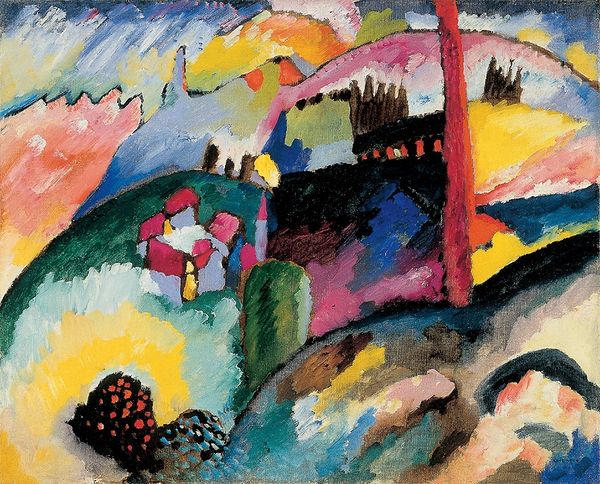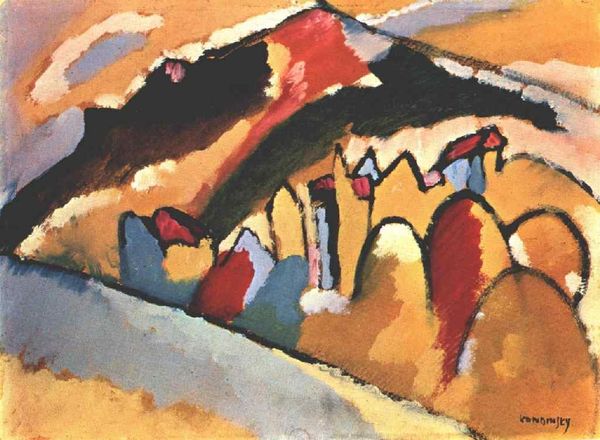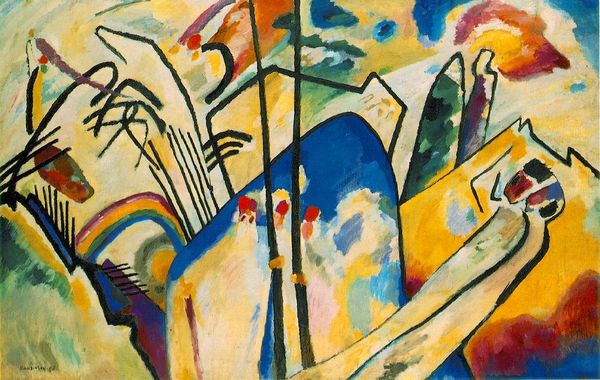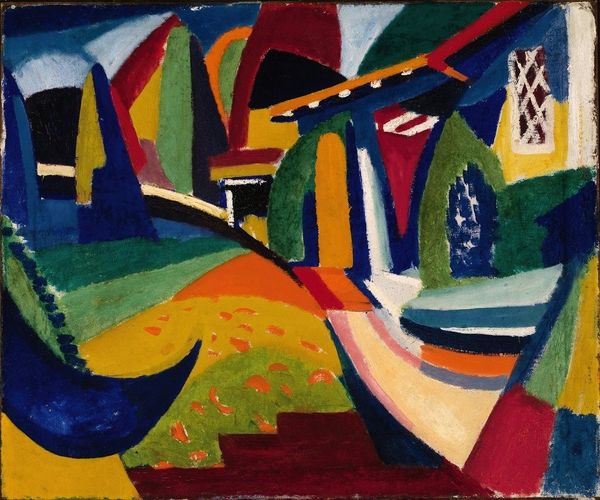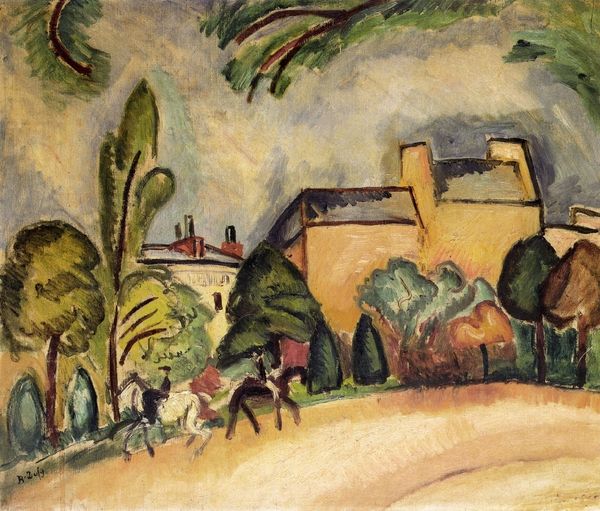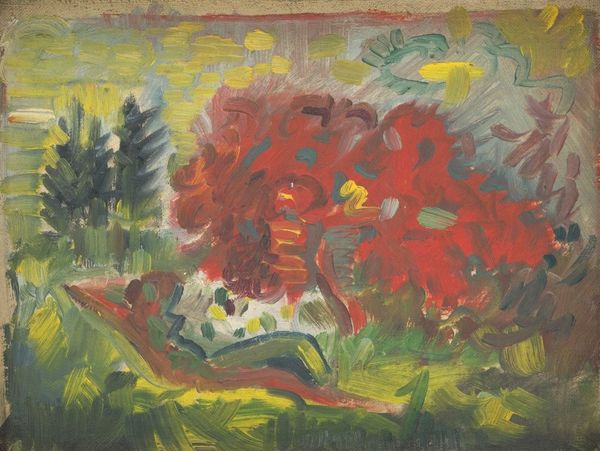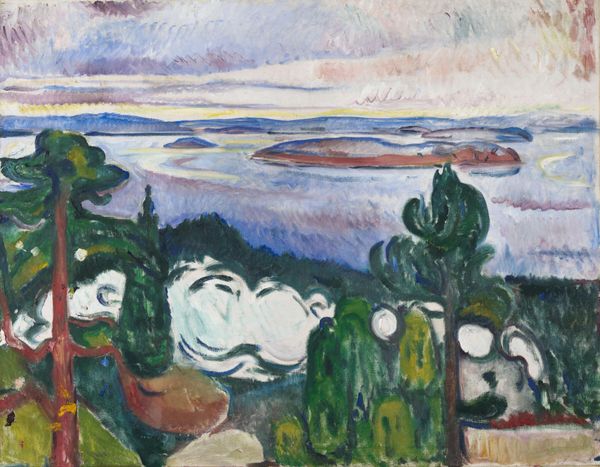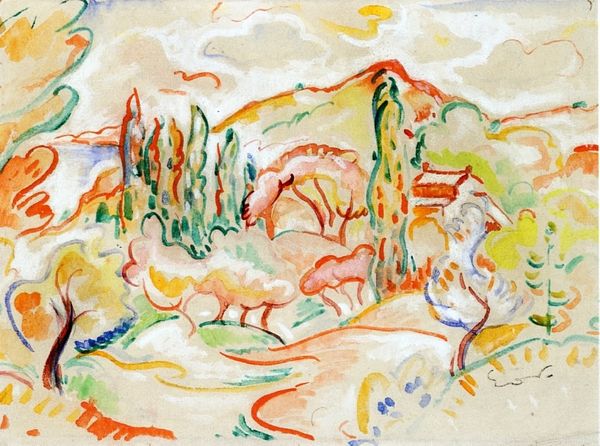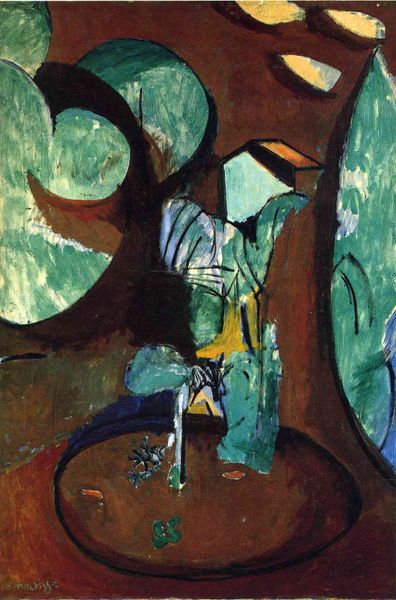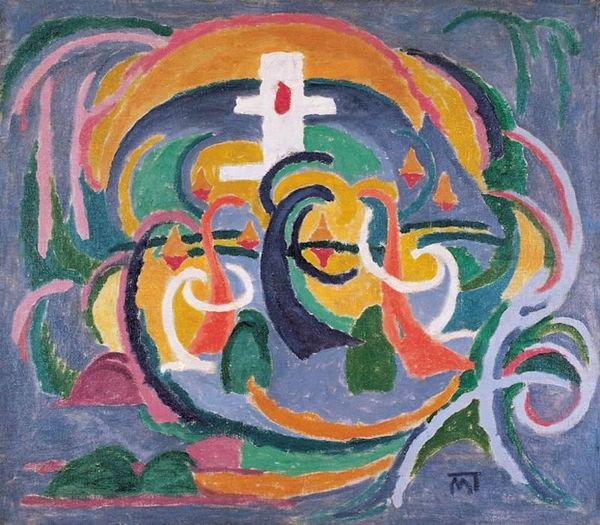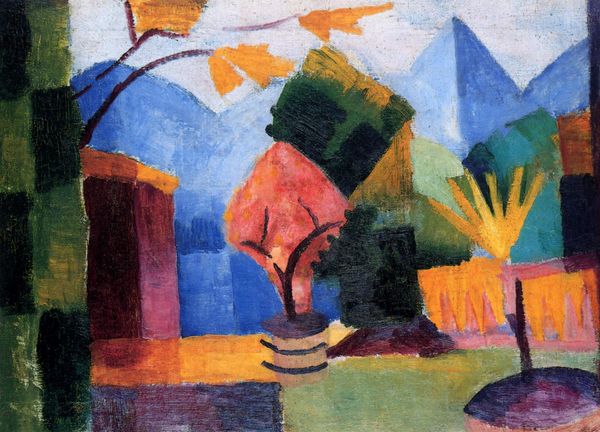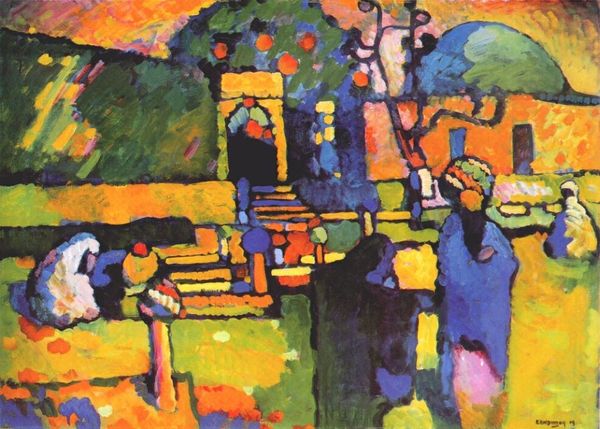
painting, oil-paint
#
art-nouveau
#
abstract painting
#
painting
#
oil-paint
#
landscape
#
oil painting
#
expressionism
#
horse
#
abstraction
#
expressionist
#
building
Dimensions: 130 x 94 cm
Copyright: Public domain
Curator: Let’s turn our attention to Wassily Kandinsky’s 1903 painting, "The Blue Rider", housed here at the Centre Pompidou. What strikes you most upon seeing it? Editor: The vibrant colors! The intense yellow and fiery reds—it's almost jarring, in a compelling way. The materials alone command your attention, like a force. Curator: Absolutely. To unpack this a bit, we can examine how Kandinsky's early Expressionist style leaned into emotional symbolism through color. The blue rider becomes this figure moving toward spiritual transformation. We can read into that transformation based on the patriarchal restraints prevalent during the 1900s that confined gender and cultural identity norms. Editor: I see it too. Considering the social context with what I see, the horse and rider motif become symbolic. Notice how those colours draw the eye to that upper yellow section that can indicate a building. We can read that as labour and process coming up to what is literally being developed. Are there boundaries in Kandinsky's labour here? Is there social tension visible here as there was then in German art communities? Curator: Well, this was created around the time the avant-garde circles emerged and with that in mind, it speaks volumes. But also consider that Kandinsky was fascinated with the spiritual in art—there is Theosophy at play. Perhaps we look at a society transitioning. It goes further into understanding the cultural context in Russia then too. How race played a huge part. Editor: These aren't just colors slapped on a canvas; they represent intentional applications by the artist of available pigments, to be viewed within social constraints—a direct connection between material, process, and historical moment. In examining it and the social commentary present, this brings forth some interesting questions about society today as well. How the labour of marginalized identities intersects and collides? Curator: Precisely, viewing artwork from multiple perspectives truly invites introspection. Editor: Art isn't suspended in time; its context must permeate how the materiality interacts. Thanks for exploring this further with me, such thought-provoking context.
Comments
No comments
Be the first to comment and join the conversation on the ultimate creative platform.
